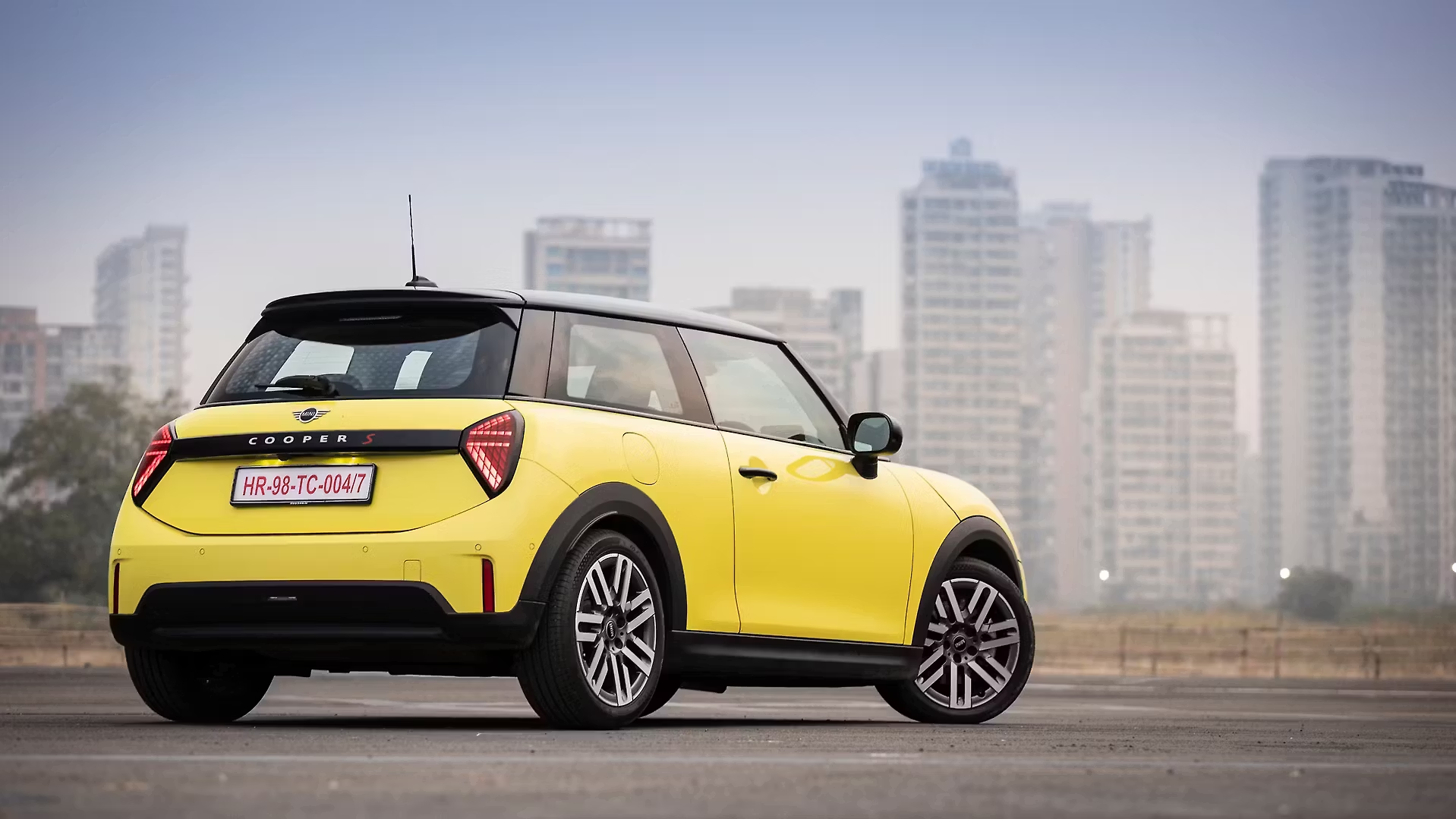Some cars frustrate their owners within months — unreliable electronics, mounting repairs, or just poor design. But others win long-term loyalty. According to a study by automotive search engine iSeeCars.com, the vehicles that owners hold onto the longest tend to be the ones that simply don’t annoy them.
The average new car is kept for 8.4 years, but the five vehicles on this list average from 9.7 to 10 years or more. These aren’t just popular cars — they’re the ones owners find dependable, enjoyable, and hassle-free long after the initial excitement wears off.
5 Cars That Never Annoy Their Owners, According to Data
Interestingly, most of these long-kept vehicles are either SUVs or sports cars — types typically purchased for lifestyle appeal or practicality. But what they share in common is a lack of headaches for owners.
Here are 5 cars that never seem to annoy their owners, based on how long people keep them.
1. Toyota Avalon
Average Ownership: 9.7 years
The Toyota Avalon stands out as the only sedan to make the list — and with good reason. Its blend of comfort, cargo space, and reliability has made it a quiet champion among owners who prefer sedans over SUVs or trucks.
In short, it delivers what owners want and doesn’t give them reasons to trade it in — no tech gimmicks that break down, no unexpected maintenance nightmares. Just smooth, dependable driving.
The Avalon stands as Toyota’s flagship sedan in the United States and represents the peak of what the Japanese automaker offers in terms of conventional performance and modest luxury.
Historically, the Avalon lacked all-wheel drive, a gap that allowed rivals like the Chrysler 300 and Dodge Charger to gain a competitive edge. In response, Toyota briefly introduced an AWD option last year for its XLE and Limited trims, pairing a 2.5-liter four-cylinder engine with an eight-speed automatic transmission.
However, that option has since been discontinued. The familiar 3.5-liter DOHC V6 engine and eight-speed automatic remain the standard powertrain, while a hybrid version is also available across three different trims, which are reviewed separately.
Despite its attempt at a sporty exterior design and an otherwise uninspiring driving feel, the Avalon is now more compelling than ever, offering a smooth and tranquil ride, a spacious cabin, and a long list of creature comforts and conveniences.
Prices for the Avalon are relatively high when compared to other vehicles in its segment. The base XLE trim equipped with the V6 engine starts at $36,275.
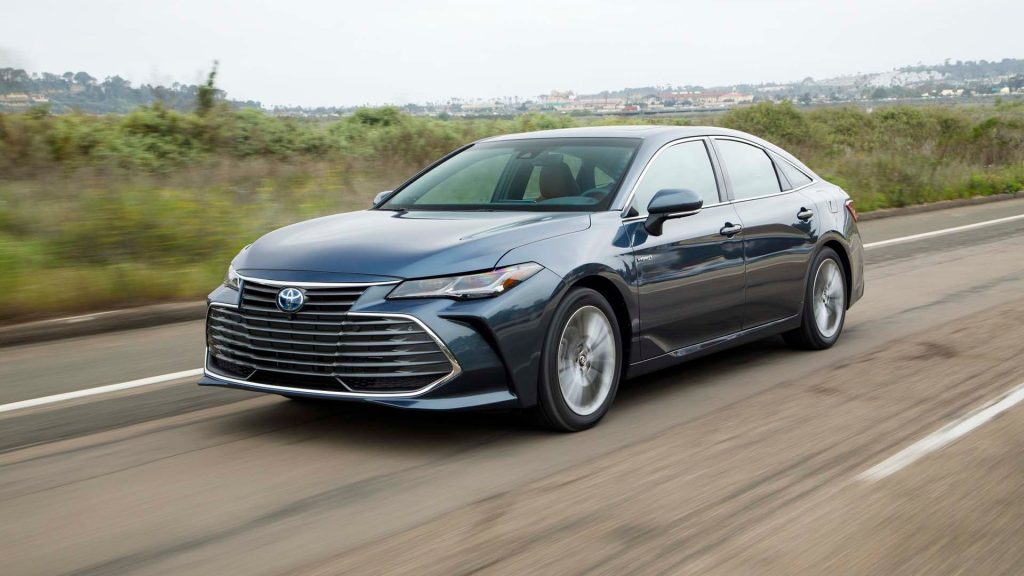
Opting for the XLE Hybrid will cost $37,250. The XSE Hybrid Nightshade Edition, which offers a unique aesthetic package and additional features, is priced at $40,600. Moving into more premium territory, the Limited trim with the V6 engine comes in at $42,575, while the Hybrid version of that trim costs $43,550.
At the top of the lineup, the Touring V6 model carries an MSRP of $42,975. It’s important to note that all listed prices exclude U.S. tax, registration, and licensing fees, in addition to a $1,025 delivery, processing, and handling charge.
The Avalon offers two primary driving experiences depending on the trim — casual and luxurious. Most trims come equipped with standard suspension designed for a smooth, relaxed ride, while the Touring trim features an adaptive variable suspension that enhances ride quality.
Although the Avalon falls short of performance-oriented rivals like the Dodge Charger and Kia Stinger, it still offers a more engaging drive than alternatives such as the Volkswagen Arteon. Where the Avalon truly excels is in its ride comfort. It glides smoothly over bumps and road imperfections, providing a serene driving experience.
Steering feel is precise and confident at the center but tends to feel less connected when turned off-center. The car does feel somewhat large and heavy, particularly at low speeds, although this sensation diminishes once cruising at highway pace.
If you’re seeking a spacious and upscale family sedan at a relatively reasonable price and don’t feel compelled to jump on the SUV bandwagon, the Avalon is well worth your consideration. Toyota offers a variety of trims that cater to different tastes, whether you prefer something with sporty flair, a more refined feel, or a little bit of both.
While it’s not a performance powerhouse by any means — and clearly wasn’t built to be — the Avalon delivers a pleasant, composed driving experience and looks stylish enough to stand out in its segment. It prioritizes comfort over performance, and that’s where it truly shines.
With impressive fuel economy and a hybrid variant for the more budget-conscious buyer, there’s little reason not to put the Avalon on your shortlist. It also comes generously equipped with comfort features, convenience tech, and advanced safety systems, making it a strong option for families and commuters alike.
Toyota has significantly improved the Avalon over the years — with Android Auto finally being added last year — and the inclusion of a highly efficient hybrid model only boosts its appeal further.
Also Read: 5 Subarus That Handle Everything and 5 That Leak Oil Nonstop
2. Toyota Sequoia
Average Ownership: 9.9 years
The Sequoia, Toyota’s full-size SUV, isn’t just big — it’s built to last. Owners hold onto it longer than nearly any other vehicle, which points to one key trait: it doesn’t let them down.
For many families, the Sequoia proves to be the kind of vehicle that keeps doing its job — year after year — without drama.
Blending robust performance with hybrid efficiency, the Sequoia stands as Toyota’s largest three-row SUV. Introduced as a new generation in 2023, it shares much of its engineering with the Toyota Tundra pickup, essentially serving as an enclosed SUV version of the truck.
The Sequoia is available in a wide range of trims, spanning from basic utility-focused versions to premium luxury and off-road-ready models. It competes directly with other full-size SUVs like the Jeep Wagoneer, Chevrolet Tahoe, and Nissan Armada.
Ride quality is also not a strong point—the Sequoia tends to jostle over uneven pavement and leans heavily through turns. These issues make the vehicle feel less refined than we’d expect, though improvements may be on the way with future updates, possibly in the 2025 model year.
Still, the Sequoia has some clever features that enhance its practicality for families. These include an adjustable cargo floor and steps that make accessing the third row easier.
Toyota’s suite of standard driver-assist technologies is a strength, and the brand’s latest infotainment system generally works smoothly. Yet despite its considerable size, the Sequoia doesn’t match the passenger or cargo space offered by some of its competitors.
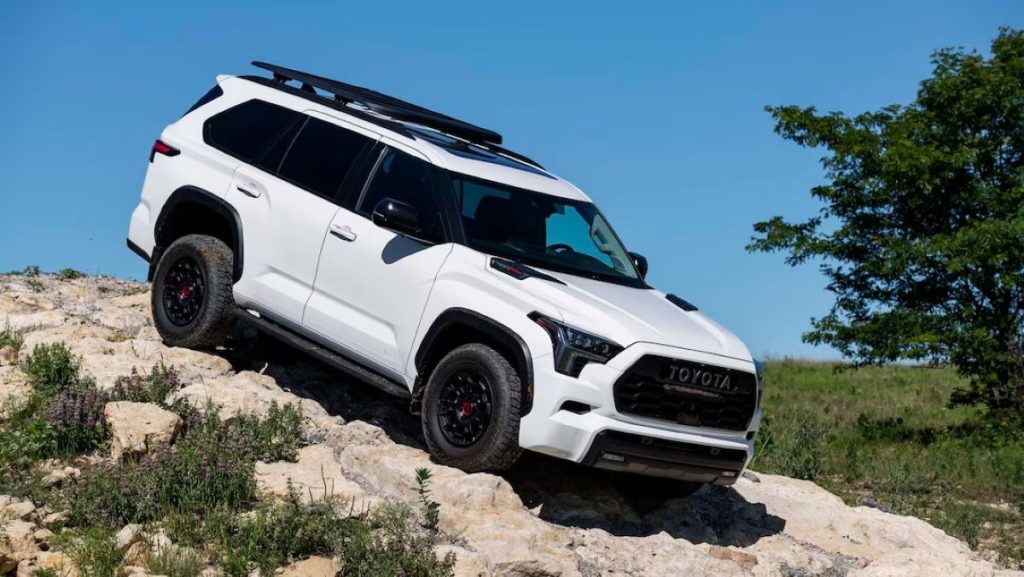
Another unusual issue for a Toyota vehicle is value. Compared to other Toyota models, the Sequoia feels overpriced based on the quality and engineering we’ve observed in the versions we’ve tested.
Even the rugged TRD Pro model, which we wanted to like, seemed too costly for what it delivers. The newly added 1794 trim could shift that perception—it includes upscale walnut wood-grain trim and massaging seats, which may help justify the price tag.
But for buyers focused on hybrid efficiency in a three-row Toyota, options like the Grand Highlander or Sienna are far more affordable and economical. For those specifically seeking a large full-size SUV, we believe other competitors offer a better all-around package than the Sequoia.
This system pairs a 3.4-liter twin-turbo V6 engine with an electric motor, delivering a combined output of 437 horsepower and 583 lb-ft of torque. A 10-speed automatic transmission sends that power to either standard rear-wheel drive or available four-wheel drive.
The Sequoia Capstone achieved a 0-60 mph time of 5.6 seconds, while the off-road-focused TRD Pro model hit the same mark in 6.2 seconds. Fuel economy is impressive for this class, rated at 21 mpg city and 24 mpg highway for RWD models, and 19/22 mpg for 4WD versions.
The 1794 trim is a new addition to the Sequoia lineup for 2025. This Texas-themed variant is named after the year tied to the historic ranch in San Antonio where Toyota has manufactured trucks and SUVs since 2006.
The current Sequoia is the first SUV to be built at that location, and the 1794 trim pays homage to that heritage. It comes well-equipped with upscale details including walnut wood-grain interior accents, 20-inch wheels, second-row captain’s chairs, a panoramic sunroof, and the updated Tow Tech package.
The trim also includes its own version of Toyota’s heated, ventilated, and massaging seats. Naturally, the 1794 badge features prominently. Alongside this new addition, the Sequoia remains available in a variety of other trims, including SR5, Limited, Platinum, TRD Pro, and Capstone.
3. Porsche 911
Average Ownership: 9.9 years
The Porsche 911 isn’t just a sports car — it’s a legend. And apparently, it’s also easy to live with. Owners who buy it tend to hold onto it for nearly a decade, and not just because it’s an icon.
The 911 doesn’t nag with maintenance issues or overwhelm with complicated tech. It just delivers consistent performance and style.
In 2019, the 911 earned the #3 spot on U.S. News’s list of “Best Luxury Sports Cars.” Porsche sold more than 35,000 911s globally in 2018, and most of those owners weren’t in a rush to sell.
Porsche has been producing the 911 since 1964, and over the decades, it has undergone significant evolution. Today, it’s widely regarded as one of the greatest sports cars of all time.
Throughout the years of refining and reimagining the 911, Porsche has created many standout models, but one offshoot stands apart from all others: the GT2 RS.
The GT2 RS nameplate has only been used twice, with the original 911 GT2 RS debuting more than a decade ago. Even today, it remains the most expensive version of the Porsche 911 that you can buy. This article explores the Porsche GT2 RS, focusing specifically on the 997.2 generation and the 991.2 generation.
The origins of the GT2 RS lie in the Porsche GT2, which itself was a high-performance variant of the 911 introduced in 1993 for the 993 generation. It was initially built to meet homologation requirements, a common backstory shared by many legendary performance cars.
Porsche followed up with another GT2 model for the 996 generation, this time geared toward GT3 racing rather than GT2, although it still outperformed the standard 911.
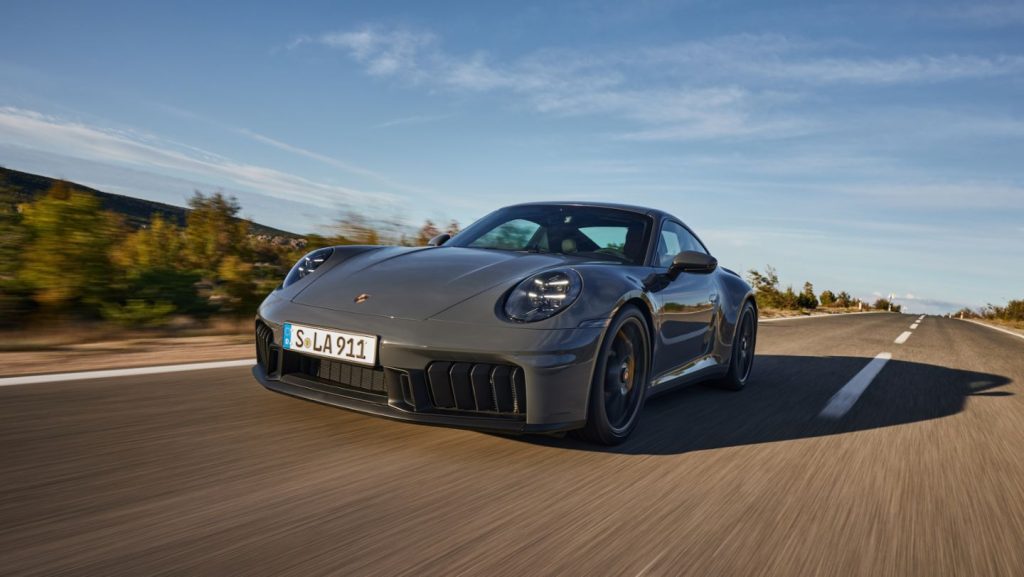
These GT2 versions were already formidable, but the RS variant wouldn’t arrive until the 997.2 generation. First announced in 2010, the 911 GT2 RS had actually begun life in 2007 as an experimental project.
Porsche limited production to just 500 units, each sold to a carefully selected group of buyers. This kind of exclusivity is nothing new, as we’ve seen a number of invite-only performance cars launched over the past decade.
The 991-generation GT2 RS may be aging, but it still possesses enough prowess to beat hypercars like the McLaren Senna, especially with enhancements from Manthey Racing.
That kind of legacy contributes to its staggering resale value. The 997.2 GT2 RS, being the most extreme version of the 997-generation 911, commands an average resale price of $490,430—about four times the cost of a base-spec 911 Carrera.
One 2011 model with just 4,000 miles, finished in red and equipped with a manual transmission, was listed for a jaw-dropping $719,895. Another similarly specced 2011 GT2 RS, listed in 2023 for $705,000, ultimately sold for an undisclosed amount.
Perhaps most astounding was a 2011 model with only 379 miles on the odometer, which sold in 2024 for a staggering $830,000. The numbers are wild, but they speak volumes about how deeply the Porsche 911 GT2 RS is valued and appreciated in the enthusiast world.
4. Toyota 4Runner
Average Ownership: 10 years
The Toyota 4Runner is rugged, straightforward, and durable — and owners love that about it. Unlike more complex modern SUVs, the 4Runner focuses on core strengths: reliability, off-road capability, and utility.
That simplicity and reliability make it a long-term favorite. If a car keeps doing its job without making life difficult, there’s just no reason to part with it — and that’s exactly what 4Runner owners seem to feel.
The price of the 2024 Toyota 4Runner starts at just over $40,000, with the base SR5 trim priced specifically at $40,455. From there, the TRD lineup begins, with the TRD Sport coming in at $43,315, followed by the TRD Off-Road at $44,300 and the TRD Off-Road Premium at $46,880.
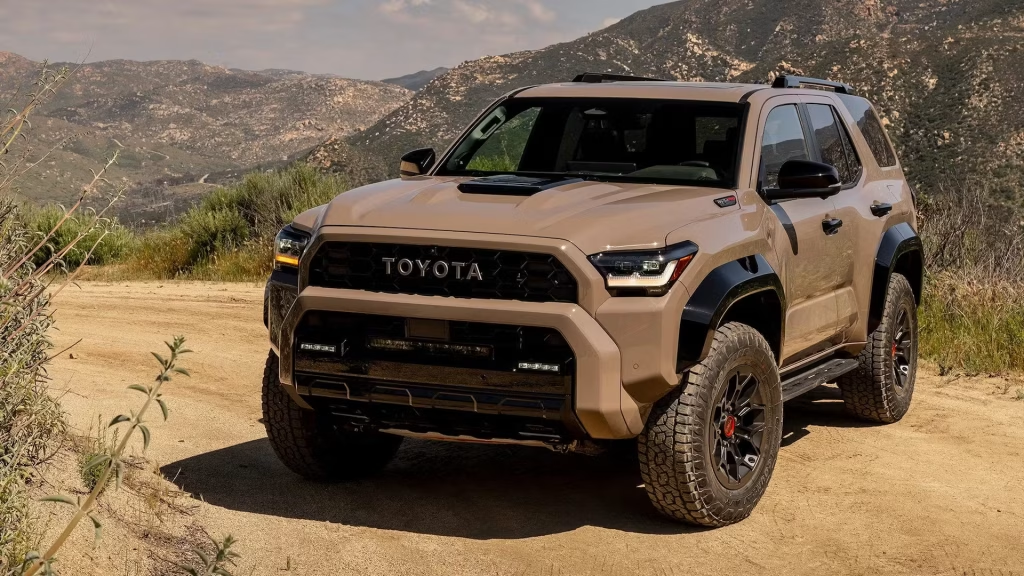
The SR5 also has a Premium version available, which will set you back $43,515. Moving closer to the $50,000 mark, the Limited trim is priced at $49,690, while the top-tier TRD Pro leads the range with an MSRP of $54,920.
Buyers should also keep in mind the additional $1,395 destination charge and various other administrative fees. If you’re looking to add all-wheel drive to any trim that doesn’t include it by default, you’ll need to budget an extra $1,875.
Given the wide array of available trims, choosing the right one can be challenging. However, even at the entry level, the SR5 offers a solid list of standard features and, with the same powertrain across the lineup and AWD available, it covers most essential needs.
The SR5 Premium is only slightly more expensive than the base SR5 but delivers significantly more value in terms of added features.
For those with off-roading in mind, the TRD Off-Road trim is hard to beat, unless you’re willing to invest in the high-priced TRD Pro, which comes equipped with premium Fox shocks and a more robust off-road setup.
Also Read: Top 10 Vehicles With Storage Bins That Are Great for First Aid Kits
5. Ford Mustang
Average Ownership: 10 years
America’s most iconic muscle car also turns out to be a long-term relationship car. Ford Mustang owners, like those of the 4Runner, hold on to their cars for an average of 10 years.
The Mustang isn’t just about looks or nostalgia — it’s about a driving experience that remains satisfying without becoming a burden. That’s rare in performance cars, which often become costly or impractical over time. Not so with the Mustang, which stays rewarding without becoming a headache.
But back to the main event: the powertrain. Let’s start with the gearbox. You might expect a really burly shift quality, but it’s surprisingly delicate, with a light action and relatively short throws.
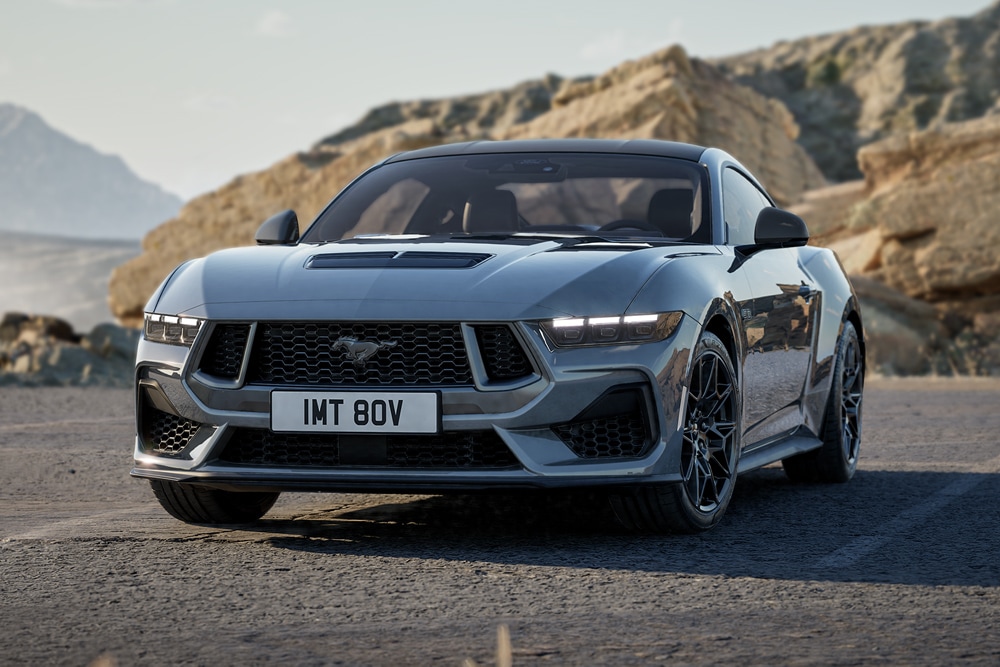
It can feel a bit snaggy if you rush it, but surely learning to finesse your shifts is part of the fun when you have deliberately said no to an automatic? And unlike the auto, the manual doesn’t disobey your commands.
The clutch is fairly heavy, but not annoyingly so, and while the throttle and brake pedal aren’t ideally aligned for heel-and-toeing, it’s doable. There’s an automatic rev-matching mode as well.
It is absurdly long-geared: second tops out north of 80mph. Weirdly, the manual Dark Horse gets an entirely different manual: still with six speeds but made by Tremec instead of Getrag and with shorter ratios. The Tremec’s shift quality is a lot meatier too.
The long ratios are doubly odd because Ford’s Coyote 5.0-litre V8 isn’t some old-school chugger. It revs to 7400rpm and wants to be kept on the boil. Accelerating from 50-70mph requires a downshift from sixth.
The good news is that it sounds spectacular at any revs, so you don’t feel like you’re missing out if you don’t take it to the redline all the time. It’s perfectly burbly at lower revs and hardens to a hammering roar at higher revs. And with the manual, you just feel even more connected to that amazing engine.
5 Cars That Cause Constant Frustration
Some cars don’t just polarize opinions — they provoke ongoing annoyance. Despite being popular and often practical, certain vehicles stir irritation from fellow drivers.
Whether it’s their design, road behavior, or sheer ubiquity, these cars tend to rub people the wrong way. In fact, many folks wouldn’t take them even if they were offered at a discount or promised lower insurance rates.
So, which cars are known for driving people up the wall? Take a look and see if any of your least favorites made the list.
1. Toyota Camry
The Toyota Camry has long dominated the sedan segment and ended 2023 as the best-selling sedan in the U.S. It’s lauded for its reliability and affordability — but that’s exactly where the praise often ends.
Drivers often vent frustration over how plain the Camry feels. It’s not exciting, it’s not bold, and it certainly doesn’t stand out. Its presence on the road is so understated, many label it not just boring but soulless. For those who crave personality in a vehicle, the Camry becomes an easy target.
For the 2025-2026 model year, several automakers were phasing out their mainstream mid-size sedans in the early 2020s, yet despite the dominance of SUVs, the Camry remained popular enough that Toyota chose to redesign it.
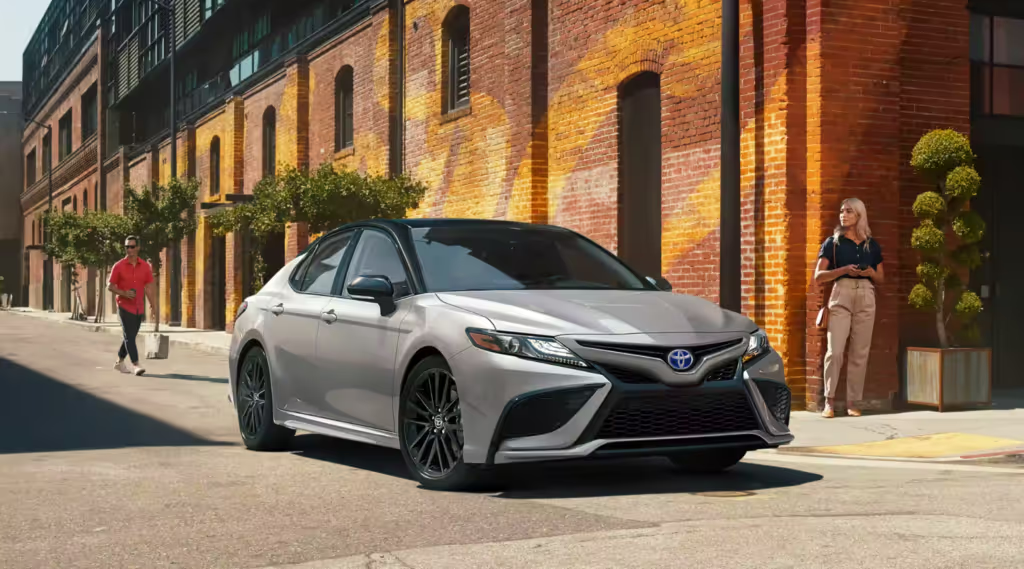
The redesign for the 2025 Camry was relatively conservative, but it featured a flashier front-end styling with a wider grille and slimmer headlights. Inside, the interior received an update with a fresh “open-style cockpit” design, incorporating new tech features like a standard digital instrument cluster and an optional head-up display.
The multimedia system was upgraded to the latest Toyota Audio Multimedia software, offering an 8-inch touchscreen, with a larger 12.3-inch display available as an option.
Perhaps the most significant change was under the hood: the previous four-cylinder and V-6 engines were replaced with a single four-cylinder hybrid powertrain, which is paired with a continuously variable automatic transmission and offers the choice of front- or all-wheel drive.
2. Ram Pickup
The Ram Pickup may sit high on the sales charts — coming in third place in 2023 — but that doesn’t mean it earns universal love.
While America is obsessed with pickups, the Ram can be a source of aggravation for some. Compared to the fanatical loyalty Ford and Chevy pickups receive, the Ram sometimes feels like the odd one out. Whether it’s the overly aggressive styling or its road presence, many drivers find themselves frustrated with this truck’s attitude — especially in traffic.
In a market filled with high-end trucks boasting six-figure MSRPs, there was one Ram pickup that offered genuine V8 power at a price comparable to a fully loaded Camry.
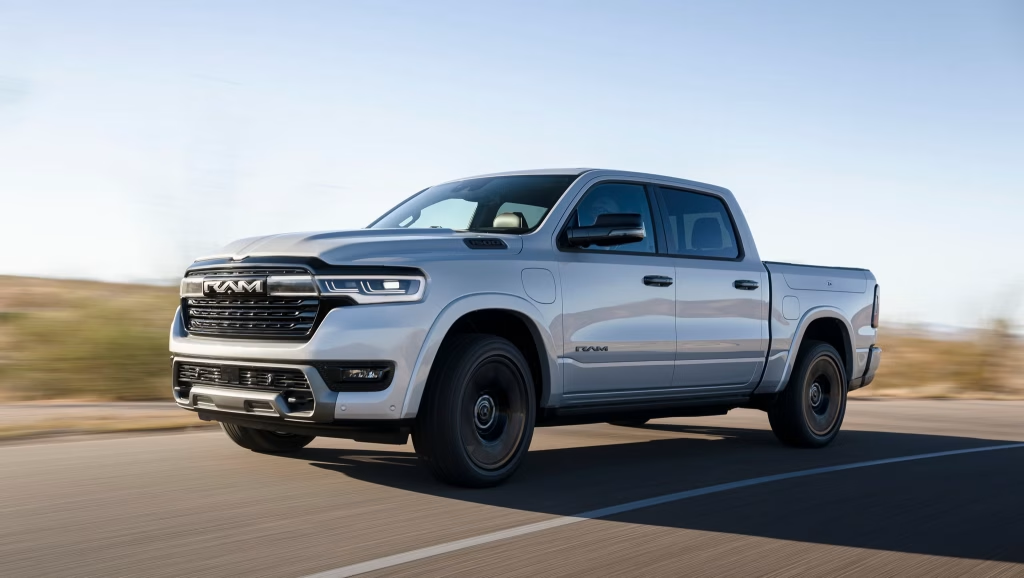
This is the story of the 2019 Ram 1500 Classic Warlock, which originally retailed for $35,345 when it first launched. It serves as a reminder that value for money will always hold appeal.
Initially, I planned to focus on the DS-generation Ram 1500 Classic Express V8, given that it was the entry-level model with a more affordable MSRP and the same 5.7-liter Hemi V8 powertrain. The Warlock trim, after all, was primarily a cosmetic upgrade featuring things like fender flares, decals, and blacked-out trim.
The Classic Express V8 could be seen as “the people’s V8 truck” – affordable, loud, fast, and capable. However, it was often overlooked, largely due to its reputation as outdated, with many buyers using them for their fleets.
The truck was quickly overshadowed by the newer DT-generation models and more attention-grabbing trims like the Rebel or the TRX. It had all the makings of a strong contender for the title of “best Ram nobody’s talking about anymore.”
Here’s the twist, though: the Warlock is essentially the same truck, just with a bit more character. I can almost guarantee that most people have completely forgotten about this version, while the entry-level Classic Express still lingers in many people’s memories.
3. Mini Cooper
On paper, the Mini Cooper has a lot going for it: nimble handling, unique design, and easy city parking. For a select group of fans, it’s a charming little ride.
But for everyone else? It’s a parking lot trickster. Drivers often think they’ve found an open space, only to realize — too late — a Mini is already tucked in there. Its toy-like appearance also draws eye rolls from those who find it “too cute” to take seriously. The Mini Cooper often ends up feeling like more of a novelty than a real car.
The Mini Cooper continues to honor its legacy with turbocharged power, go-kart-like handling, and distinct styling that draws heavily from the brand’s motorsport roots.
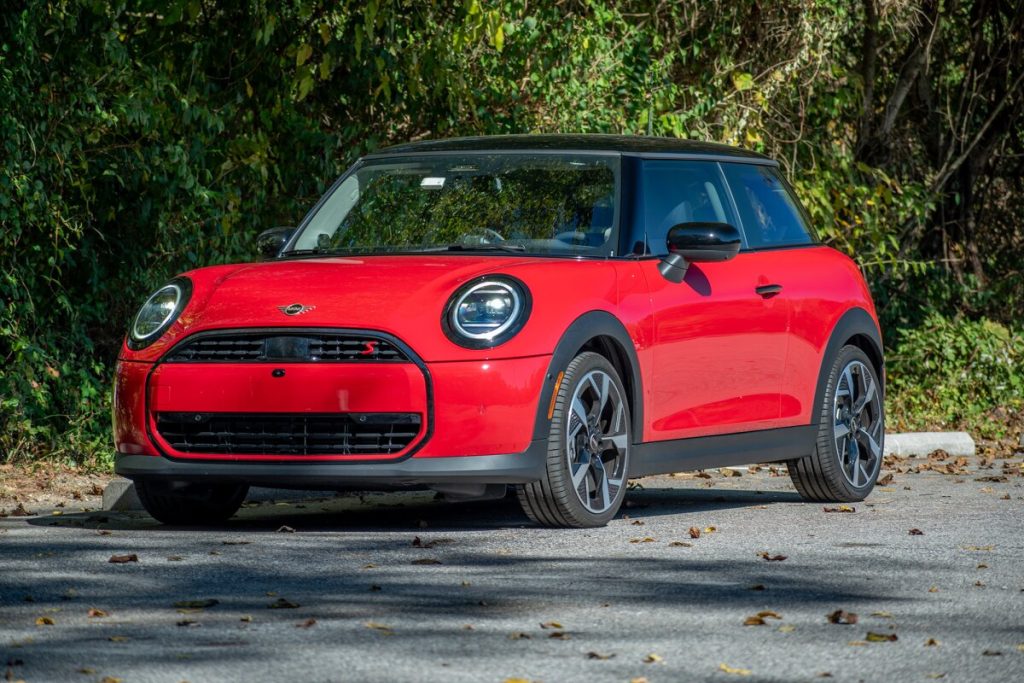
Now firmly established as a “small premium car,” the JCW Favoured feels sharper, more refined, and better built than its predecessors, but it also comes with a higher price tag. While its playful nature and engaging chassis remain intact, the absence of a manual gearbox and the synthetic engine sounds may leave some purists feeling disappointed.
The MINI Cooper 3-Door lineup begins with the Cooper C, which is available in three trim levels: Core, Classic, and Favoured. The Core model starts at $41,990, plus on-road costs (ORCs), and includes features like LED headlights, a 240mm OLED central touchscreen, wireless Apple CarPlay and Android Auto, and 16-inch alloy wheels.
The Cooper S comes in two variants – Classic and Favoured. The Classic starts at $49,990 plus ORCs and is equipped with a more powerful 2.0-litre turbocharged four-cylinder engine generating 141kW, along with larger wheels, upgraded trim, and additional comfort and convenience features as standard.
4. Ford Flex
Despite being off the market since 2019, the Ford Flex continues to cause irritation — mostly because of how it looks.
Its boxy design has been likened to a stretched-out station wagon or a squarish minivan. It’s not winning any beauty contests, and that alone puts it in the frustration zone for many car enthusiasts.
With alternatives like the Ford Escape offering similar functionality and more visual appeal, it’s no surprise the Flex didn’t stick around.
The Ford Flex was a full-size crossover produced from 2009 to 2019, designed as an alternative to minivans with seating for up to seven passengers and a distinctive boxy design. Built on Ford’s D4 platform, which it shared with the Ford Explorer and the badge-engineered Lincoln MKT, the Flex offered a choice between a 3.5L V6 Duratec or EcoBoost powertrain.
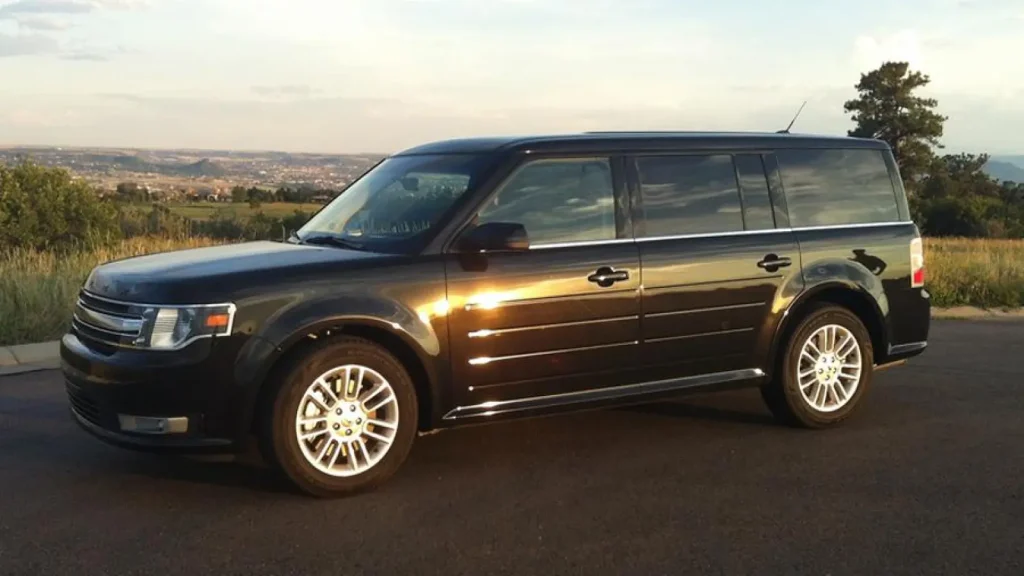
The base engine, a naturally aspirated V6, produced 262 horsepower, with the option for either front-wheel drive (FWD) or all-wheel drive (AWD). Additionally, a twin-turbo EcoBoost variant was available, delivering 355 hp.
A six-speed automatic transmission was the sole option for all Ford Flex models, and in 2013, the vehicle received a facelift that included a new front end, slight power increases, updated chassis components, and a new dashboard design.
The model achieved notable sales figures in its early years, selling 34,227 units in 2010 and 38,717 units in 2009, marking the only years it surpassed the 30,000 mark. Though it never became a major sales success, the Flex earned praise for its unique design and strong engine options.
From 2013 to 2019, the Ford Flex underwent significant updates, including a new front-end design with the word “FLEX” spelled out across the hood and revised headlights.
Inside, the dashboard was updated, and features such as adaptive cruise control, blind-spot monitoring, and inflatable seat belts were introduced. The base V6 engine’s output was increased by 25 horsepower to 287 hp, while the EcoBoost model received a 10-horsepower increase, reaching 365 hp.
The facelifted models also benefited from larger front brake rotors, a retuned suspension, and a new electric power steering system that replaced the previous hydraulic unit, further improving performance and handling.
5. Jeep Wrangler
There’s no denying the Jeep Wrangler’s legacy. With its off-road prowess, removable doors, and rugged build, it thrives in the wild.
But most Wranglers aren’t out climbing mountains — they’re parked at strip malls or crawling through traffic. That’s where the disconnect hits hard.
Many see it as out of place in urban and suburban settings, and its bouncy ride and boxy look just don’t fit the vibe. What’s meant to be an adventurous beast becomes a daily annoyance for those around it.
When you think of “off-road,” the Jeep Wrangler is likely the first vehicle that comes to mind. Whether it’s the entry-level Sport model or the powerful Unlimited Rubicon 392, there’s a Jeep Wrangler that suits every enthusiast’s preferences.
For 2025, Jeep has brought back the Hemi V-8 powertrain after announcing that 2024 would be its final year. In addition, the eight-speed automatic transmission for V-6 models returns.
Despite its iconic status, the Wrangler faces tough competition in the off-road vehicle market, with rivals such as the Ford Bronco, Land Rover Defender, and Toyota 4Runner.
Jeep has revived the V-8-powered Wrangler 392 for 2025, though without the Mopar triple loop grille guard and Mopar Jeep 83-piece toolkit, which were exclusive to the 2024 Final Edition model.

The eight-speed automatic transmission for V-6 models is also back this year. Other than these updates, everything else from the 2024 Wrangler carries over unchanged.
The Jeep Wrangler is often considered the Porsche 911 of off-road vehicles. It’s a benchmark in the off-roading world, benefiting from decades of evolutionary development that have earned it the legendary status it holds today. This evolution mirrors how Porsche refined its sports car formula while staying true to the 911’s rear-engine design.
But let’s focus on the Wrangler. The current JL-generation Wrangler debuted in 2018 and quickly earned recognition, winning our 2019 SUV of the Year award.
Most recently, the 2024 Wrangler received a significant refresh, introducing several features designed to enhance both daily driving and off-roading experiences. These updates include a larger display, more safety technology, and the option to have a winch installed directly from the factory, further solidifying the Wrangler’s capabilities on and off the trail.

